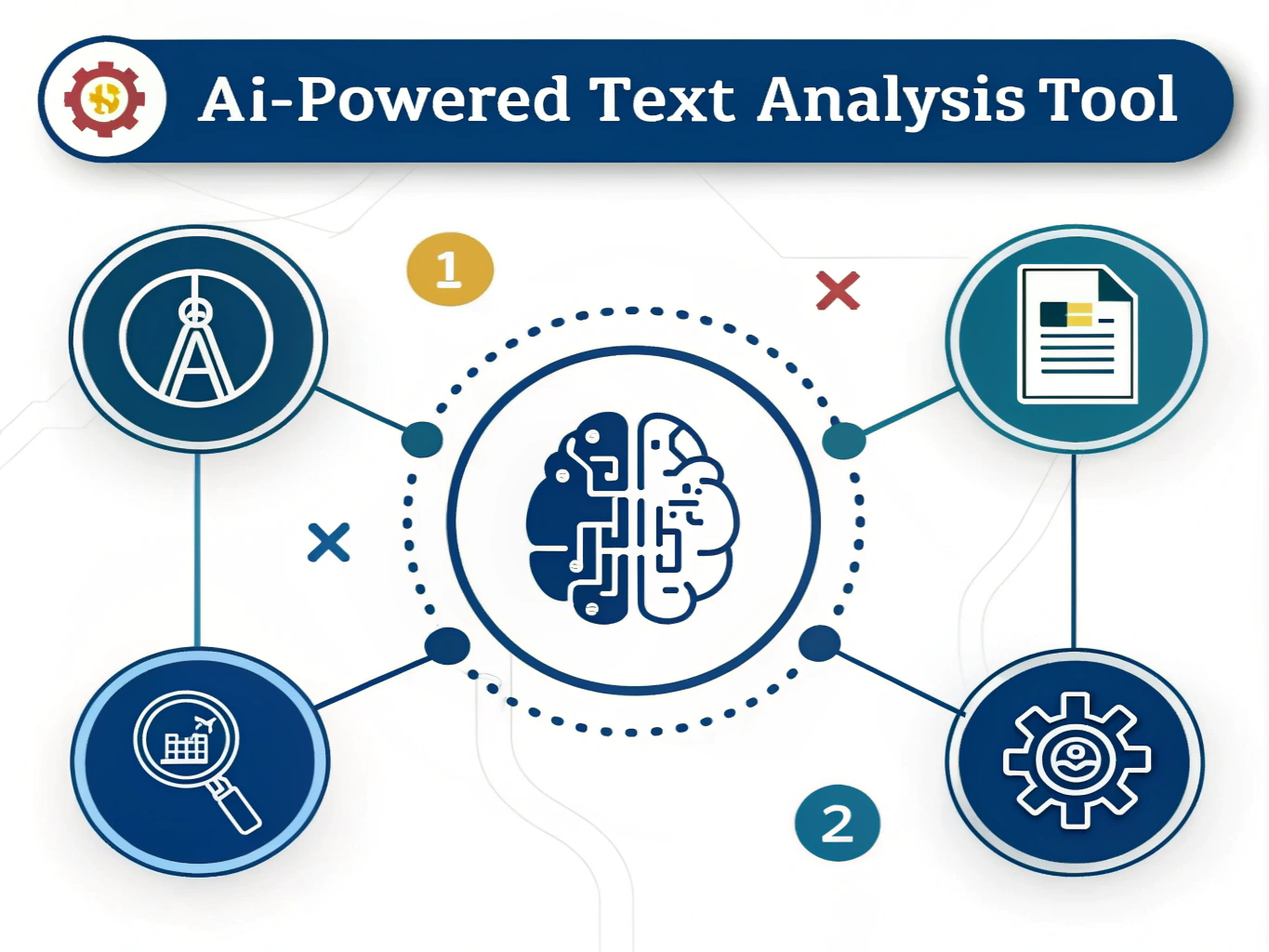Is this tool helpful?
How to Use the Tool Effectively
Follow these steps to extract clear, powerful insights from your text using the AI-powered Content Insight Extractor:
- Enter your text: In the main text area labeled “Text content to extract insights from,” paste or type the passage you want to analyze. For example, you might input a blog post about climate change or a detailed product review.
- Add specific topics (optional): Use the “Specific topics to focus on” field to narrow the analysis. Input topics separated by commas, like “sustainable energy, policy changes” or “user experience, customer satisfaction.” This helps the tool prioritize these themes in the insights.
- Start insight extraction: Click the “Extract Insights” button. The tool processes the text and extracts concise, meaningful bullet points summarizing the key ideas.
- Review the results: Once the processing finishes, review the generated insights below the form. The insights highlight surprising and impactful points from your text.
- Copy your insights: Use the “Copy to Clipboard” button to save or share the summarized insights quickly.
Introduction to the AI-Powered Content Insight Extractor
The Content Insight Extractor is a tool designed to help you identify the most meaningful ideas from complex or lengthy texts quickly. Using advanced natural language processing, it scans your input and highlights surprising, powerful, and relevant concepts in clear, concise bullet points.
The tool is ideal if you want to grasp core ideas without reading through dense material repeatedly. It supports focused analysis by allowing you to specify key topics, ensuring the insights align with your interests. This makes it useful for researchers, writers, educators, and anyone seeking to learn more effectively from written content.
By summarizing insights into digestible 15-word bullet points, it enhances understanding and retention, sparking ideas that encourage deeper thought and discussion.
Practical Applications of the Content Insight Extractor
Academic Research
Quickly analyze academic papers, articles, or studies to extract key findings. This helps streamline literature reviews and keeps you updated on essential developments in your field.
Example: A biology student analyzing multiple research papers on climate effects could extract core conclusions to guide their thesis.
Business Analysis
Use the tool to summarize market research, competitor analysis, or industry reports. The extracted insights can sharpen your strategic planning and reveal new growth opportunities.
Example: A marketing manager might input consumer feedback surveys to identify emerging trends and customer priorities.
Content Creation and Journalism
Process source materials to discover compelling story angles and support engaging articles, blogs, or reports.
Example: A journalist preparing a feature on renewable energy could input policy documents and scientific reports to highlight key insights.
Personal Development and Learning
Extract actionable ideas from self-help books, philosophical writings, or educational content to enhance ongoing personal growth.
Example: A learner studying mindfulness texts could receive clear, memorable wisdom bites to apply daily.
Educational Support
Teachers and students can use this tool to simplify complex subject matter, create study summaries, and generate discussion prompts for class.
Example: A history teacher might input detailed chapters on the French Revolution to prepare classroom discussion points.
Key Benefits of Using the Content Insight Extractor
- Save time: Rapidly grasp the essence of lengthy texts without rereading.
- Improve comprehension: Presenting ideas in precise 15-word points deepens understanding.
- Spark creativity: Insights encourage new thoughts and dynamic discussions.
- Enhance content creation: Identify central themes to focus your writing and communication.
- Support lifelong learning: Regular use promotes active engagement with diverse topics.
How the Optional Topic Focus Enhances Insight Extraction
By entering specific topics, you guide the AI to emphasize insights related to those themes. For example, specifying “climate policy, renewable technology” in a text about environmental issues prioritizes these areas in the result.
The tool balances focused analysis with general understanding, ensuring you receive relevant and comprehensive insights tailored to your interests.
Frequently Asked Questions
How does the tool select “surprising” or “powerful” insights?
It uses natural language processing to spot unique ideas, impactful statements, and fresh perspectives that challenge common assumptions within your text.
Can I use texts in languages other than English?
The tool performs best with English content. Processing other languages may yield less accurate insights as language support is evolving.
What text length works best?
Submit texts at least several paragraphs long to provide enough context. Very lengthy texts like full books may take more time to process.
Can I save or export the insights?
You can copy the generated insights easily using the provided copy function, then paste them anywhere for further use.
How often should I use the tool?
Use it whenever you want to condense important texts, whether for every article or selectively when tackling complex materials.
Is this tool helpful for creative writing or brainstorming?
Yes, it helps identify core themes in your drafts or source material, inspiring fresh ideas and breaking creative blocks.
Addressing Your Information Overload
In a world full of constant information, this tool helps you quickly identify and remember the essential ideas. Instead of getting overwhelmed by lengthy reading, you get clear, digestible insights to stay informed and focused.
It bridges comprehension gaps by translating complex concepts into simple, memorable points and encourages you to think critically by engaging deeply with each insight.
Important Disclaimer
The calculations, results, and content provided by our tools are not guaranteed to be accurate, complete, or reliable. Users are responsible for verifying and interpreting the results. Our content and tools may contain errors, biases, or inconsistencies. Do not enter personal data, sensitive information, or personally identifiable information in our web forms or tools. Such data entry violates our terms of service and may result in unauthorized disclosure to third parties. We reserve the right to save inputs and outputs from our tools for the purposes of error debugging, bias identification, and performance improvement. External companies providing AI models used in our tools may also save and process data in accordance with their own policies. By using our tools, you consent to this data collection and processing. We reserve the right to limit the usage of our tools based on current usability factors.







